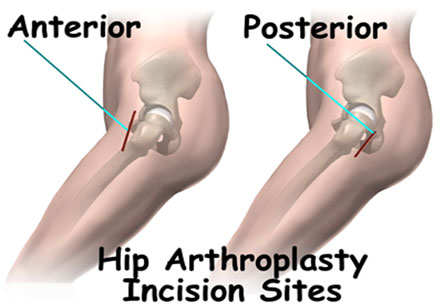Anterior Hip Replacement
Introduction
The hip is a ball and socket type of joint consisting of the femoral head (ball) which fits into acetabular socket of the pelvic bone. The opposing surfaces of the femoral head and acetabulum are covered by hyaline cartilage inside the joint cavity making an almost frictionless surface for free and painless motion. In an arthritic hip, there is degeneration and loss of this surface. This causes contact and friction between the femoral head and acetabulum. Symptoms of the patient are pain, loss of hip movements and impairment in daily activities. Total hip replacement is a definitive and effective mode of treatment in case of hip arthritis.
In the anterior approach, the surgeon reaches the hip joint from front of the hip as opposed to lateral (side) or posterior (back) approach.
Iran ranks among the top 10 countries in orthopedics and Iranian surgeons perform high quality orthopedic surgeries at highly affordable prices

This approach of hip replacement has several benefits for the patient like:
1. Less invasive – The anterior approach of hip replacement is known as muscle-sparing because it does not involve cutting the musculature at the side or back of the thigh and thus reduces muscle damage.
2. Short hospital stay- about two to five days.
3. Fast recovery – Patients can bear their full weight immediately or very soon after surgery in this approach as compared to other methods. Bending of the hip joint is also more comfortable.
4. Less scarring – The anterior approach of surgery allows for relatively small incision, so the scars are less.
5. Reduced discomfort – Less discomfort is felt by the patient during the recovery period.
6. Rehabilitation time is less- as no muscle is detached from either the pelvis or the femur and also the gluteal muscles which are the most important muscles for the hip movements are not cut in the anterior approach.
7. There is less chance of a dislocation following this surgery.
8. The precautions to be followed strictly after the lateral and posterior approach are not mandatory in anterior approach.
9. The chances of a leg length discrepancy are less following this surgery.
High-tech operating table
The anterior approach requires a high-tech operating table. This table maintains the legs and pelvis in a stable position. This table has leg supports which allow the surgeon to adjust the operative leg during the procedure with more precision and control. A better access to the femur is provided so that the implant can be placed most effectively.
Patient selection advantage
The Anterior Approach allows for a wider range of patients, also including heavier and larger ones. The reason for this is that in the method, the surgeon enters the body closer to the hip joint, so there is very less tissue between the skin and the hip joint.
The procedure
1. It begins with exposing the hip joint without detaching muscles or tendons from the bone.
2. The diseased portion of the acetabulum is removed and is replaced by a titanium cup like in typical hip replacement.
3. Then with the help of the high-tech operating table, the operative leg is rotated so that the foot points outward, extending toward the floor. This allows a very good access to the thigh bone, so the surgeon can replace the diseased portion of the thigh bone also by a specialized stem implant. This function of the table is important because the visibility of the surgeon is limited due to smaller incision used in the approach.
4. Continuous views of comparison between the hip getting operated and the opposite hip are shown on a TV screen which guides through the entire process and helps in placing a stable hip replacement.
5. High-tech table and X-ray guidance gives the surgeon a precise control over the length of the patient’s leg.
6. The smaller incision gives good cosmetic results.
Disadvantages
1. A special operating table is required for this operation. The table needs to be turned to insert the prosthesis. Hip fractures may happen during the procedure as the surgeon may not know how much force is to be exerted on this table.
2. The C-arm or the X-ray equipment, if not placed correctly, can cause incorrect placement of implant
3. Damage to the surrounding nerves or muscles can occur during the implant insertion.
4. A minimal invasive approach often reduces the visibility and also it makes it hard for the surgeon to feel what is being done. This can increase the revision rates.